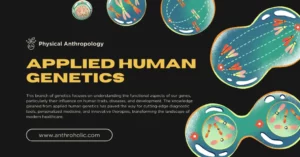AI Answer Evaluation Platform Live Now. Try Free Answer Evaluation Now
Impact of Air Pollution on Human Health
Air is the most essential element for human survival, yet it is increasingly becoming a silent killer. Every breath we take now carries invisible particles and harmful gases that slowly erode our health. Air pollution, once considered an environmental concern, has now emerged as a leading public health challenge worldwide. According to health research organizations, it is responsible for millions of premature deaths every year and significantly reduces life expectancy across entire populations. In countries like India, where rapid industrialization, vehicle emissions, and household fuel use converge, the situation has reached alarming proportions.

Air pollution does not discriminate it affects the rich and poor, urban and rural, young and old. However, its impact is far more severe on vulnerable groups such as children, the elderly, and those with chronic illnesses. Understanding the different types of pollutants, how they enter our bodies, and the range of health problems they cause is essential to grasp the true scale of this crisis.
What is Air Pollution?
Air pollution refers to the presence of harmful substances in the atmosphere that make the air unsafe for humans, animals, and the environment. In simple terms, it means the air we breathe is contaminated with particles and gases that should not be there in such high amounts. While some air pollutants come from natural sources like volcanic eruptions, wildfires, or dust storms, the majority today are caused by human activities such as burning fuels, industrial production, and increasing vehicle emissions.
Air pollution is not always visible. Sometimes it appears as thick smog hanging over a city, but often it is invisible, made up of microscopic particles and gases we cannot see or smell. These pollutants mix with the air, travel long distances, and penetrate our bodies with every breath we take.
Major Pollutants and Their Sources
Particulate Matter (PM2.5 and PM10): These are tiny dust-like particles released from vehicles, industries, and burning of biomass. PM2.5 is especially dangerous because it is small enough to travel deep into the lungs and even enter the bloodstream.
Ground-level Ozone (O₃): Unlike the protective ozone high in the atmosphere, this harmful form is created when pollutants from cars and power plants react with sunlight. It irritates the lungs and worsens asthma.
Nitrogen Dioxide (NO₂) and Sulphur Dioxide (SO₂): Both are gases mainly produced by burning fossil fuels in vehicles, factories, and power plants. They cause breathing difficulties and contribute to smog and acid rain.
Carbon Monoxide (CO): A colorless, odorless gas formed by incomplete burning of fuel. It reduces the amount of oxygen carried in the blood and can be deadly in high amounts.
Indoor Pollutants: Smoke from cooking with wood, dung, or kerosene stoves, along with second-hand tobacco smoke, creates severe indoor air pollution, especially in households without proper ventilation.
Health Effects of Air Pollution
Short-Term Effects
- Irritation of eyes, nose, and throat
- Worsening of asthma and bronchitis
- Reduced lung function and breathing difficulty
- Increased risk of heart attacks and arrhythmias
Long-Term Health Effects
Respiratory Diseases: The lungs are the first organs to be affected by polluted air. Long-term exposure to harmful particles and gases can lead to Chronic Obstructive Pulmonary Disease (COPD), a condition that makes breathing progressively more difficult. It also increases the risk of lung cancer and scarring of lung tissue (fibrosis), which permanently reduces lung capacity.
Cardiovascular Diseases: Pollutants do not just stay in the lungs they can enter the bloodstream, causing inflammation and damaging blood vessels. This raises the risk of high blood pressure, strokes, and ischemic heart disease, where the heart’s blood supply is restricted.
Neurological Disorders: Recent studies have shown that fine particles can even reach the brain. This has been linked to faster cognitive decline and higher risks of dementia, Alzheimer’s disease, and other neurological problems.
Reproductive and Developmental Harm: Air pollution also affects unborn children. Pregnant women exposed to polluted air face a higher risk of low birth weight babies, premature deliveries, and even miscarriages. These impacts can have life-long consequences for the child’s health and development.
Mortality: The overall impact is devastating. The World Health Organization (WHO) estimates that air pollution contributes to 7–8 million premature deaths every year worldwide, making it one of the largest environmental health threats globally.
Who is Most at Risk?
While air pollution affects everyone, certain groups face higher risks. Children are particularly vulnerable because their lungs are still developing and they breathe more air relative to their body weight than adults. The elderly, with weaker immune systems and pre-existing conditions, often suffer the worst consequences, such as worsening of chronic diseases. Pregnant women are another high-risk group, as pollution exposure can harm both mother and child.
People with existing respiratory or heart conditions are the most immediately impacted. For them, even a small spike in air pollution can mean hospitalization or, in severe cases, death.
The Situation in India
India is among the most affected countries when it comes to air pollution. Studies show that the average Indian loses nearly three years of life expectancy because of poor air quality. In cities like Delhi, where smog blankets the skyline for months, the situation is even more dire, with life expectancy losses reaching almost a decade.
In states such as Andhra Pradesh, research indicates that air pollution reduces life expectancy by more than two years. Across the nation, household air pollution from cooking with biomass fuels continues to claim hundreds of thousands of lives every year. These figures make it clear that air pollution is not an isolated issue but a widespread public health emergency in India.
Emerging Concerns: Microplastics in the Air
Beyond traditional pollutants, scientists are now uncovering new dangers such as airborne microplastics. These tiny plastic fragments, originating from synthetic fabrics, packaging, and degraded waste, are now found suspended in the air we breathe. Research estimates that humans may inhale tens of thousands of these particles each day. The long-term health effects are still being studied, but early findings suggest links to respiratory problems, inflammation, and even cancer. This adds yet another layer of concern to the already complex problem of air pollution.
What Can Be Done?
Policy-Level Measures
The fight against air pollution requires strong political will and large-scale reforms. Governments must strictly enforce emission standards for industries and vehicles, transition towards cleaner renewable energy, and promote sustainable urban planning. Shifting households from biomass fuels to cleaner alternatives like LPG and electricity can dramatically reduce indoor pollution.
Individual and Community Efforts
At the individual level, small steps can still make a difference. Using air purifiers at home, wearing protective masks on high-pollution days, and avoiding outdoor activity when air quality is poor are practical measures. On a community level, planting more trees, promoting public transportation, and reducing dependence on private vehicles can collectively improve air quality. Public awareness is equally important, as people need to understand how their everyday choices contribute to cleaner or dirtier air.
Conclusion
Air pollution is no longer just about dirty skies or hazy mornings it is about damaged lungs, weakened hearts, impaired brains, and shortened lives. It touches every aspect of human health, from the moment a baby is conceived to the final years of life. The evidence is overwhelming: air pollution is a slow, invisible killer that demands urgent attention.
While the problem may seem too vast to solve, history shows that collective action works. Countries that have implemented strong air quality policies have seen measurable improvements in public health. India and other developing nations must take bold steps now, not only to save lives today but to ensure healthier futures for generations to come. Clean air is not a privilege it is a fundamental right, and protecting it is one of the greatest responsibilities of our time.
Reference
- NIEHS – Air Pollution and Health Risks
The National Institute of Environmental Health Sciences (NIEHS) offers a comprehensive overview of how air pollution is linked to diseases across multiple systems, including respiratory, cardiovascular, neurological, reproductive, and more. https://www.niehs.nih.gov/research/supported/exposure/air_pollution - PAHO/WHO – Ambient and Household Air Pollution and Health (FAQs)
This resource explains the difference between ambient (outdoor) and household (indoor) air pollution and details how both contribute to serious outcomes like respiratory infections, heart disease, stroke, and lung cancer. https://www.paho.org/en/topics/air-quality-and-health/ambient-and-household-air-pollution-and-health-frequently-asked - 1. WHO – Health Effects of Air Pollution (PDF summary)
- This WHO document outlines a wide range of health impacts from air pollution, including its connections to neurological issues like dementia and Alzheimer’s, as well as developmental impacts like low birth weight and prenatal health. https://iris.who.int/bitstream/handle/10665/345329/9789240034228-eng.pdf
- 2. Frontiers in Public Health – 2024 Meta-Analysis on Air Pollution and Birth Outcomes
- A comprehensive recent study that reviews numerous research findings linking ambient air pollutants, such as PM2.5, PM10, ozone, NO₂, and SO₂—to adverse birth outcomes like preterm birth, low birth weight, and stillbirth. https://www.frontiersin.org/journals/public-health/articles/10.3389/fpubh.2024.1488028/full




